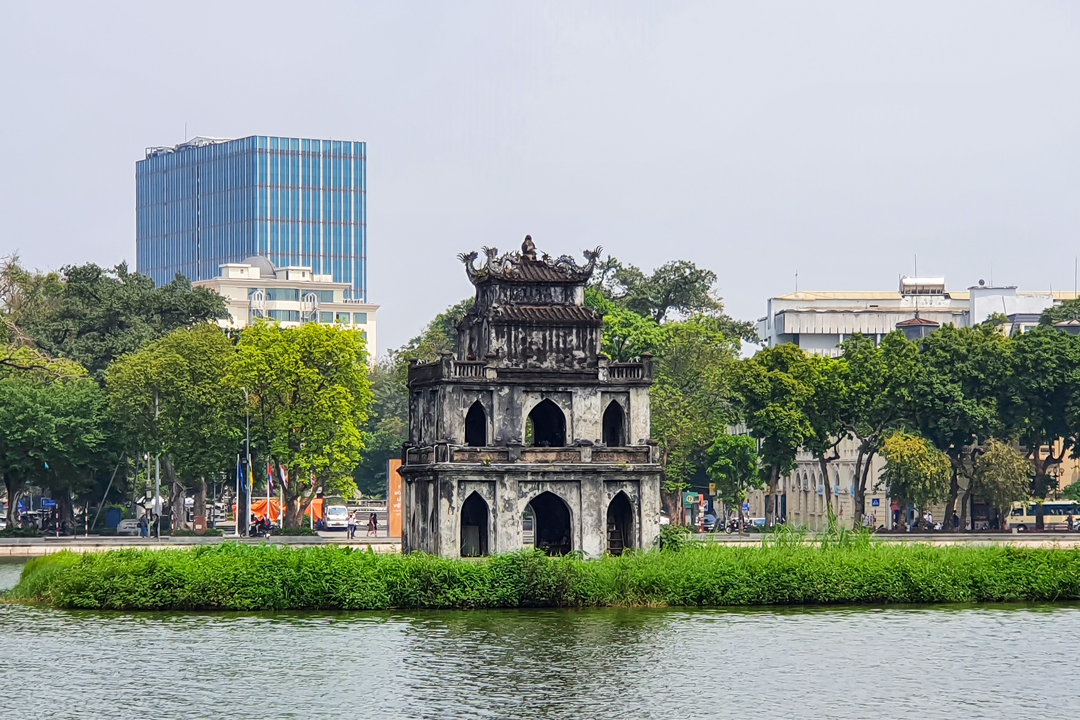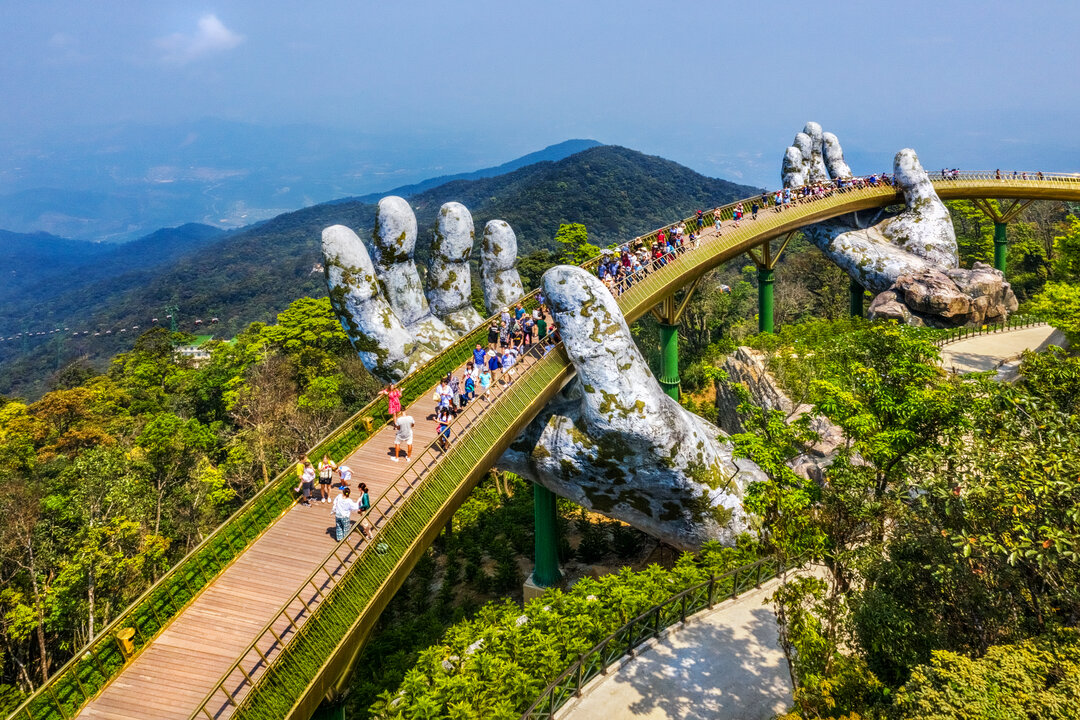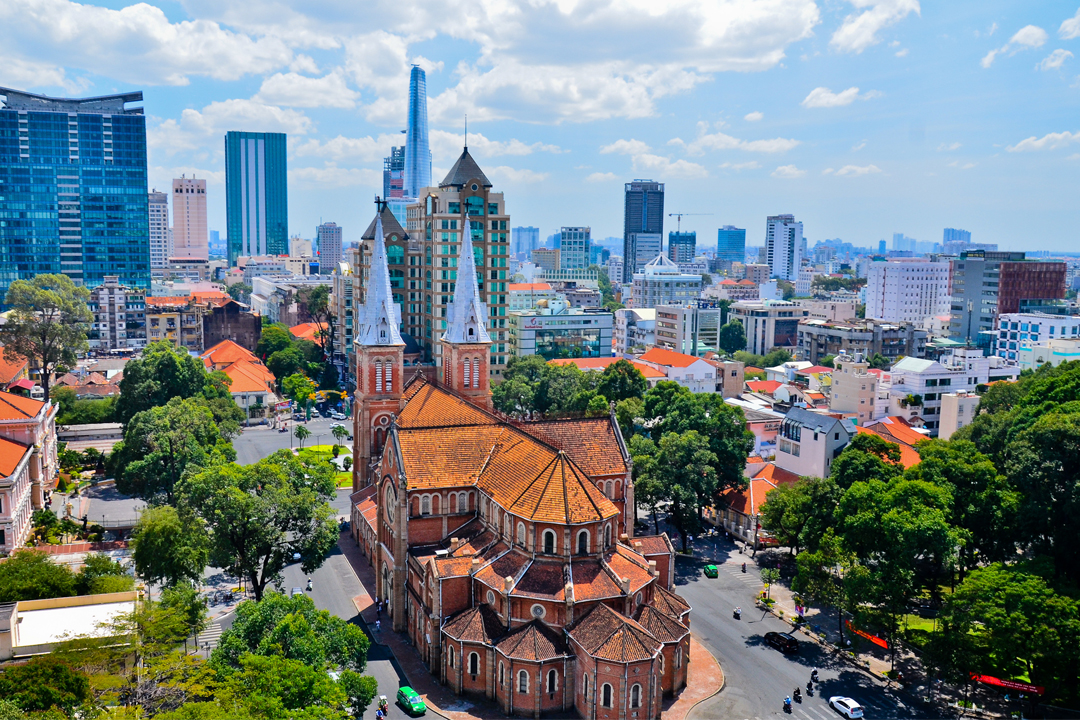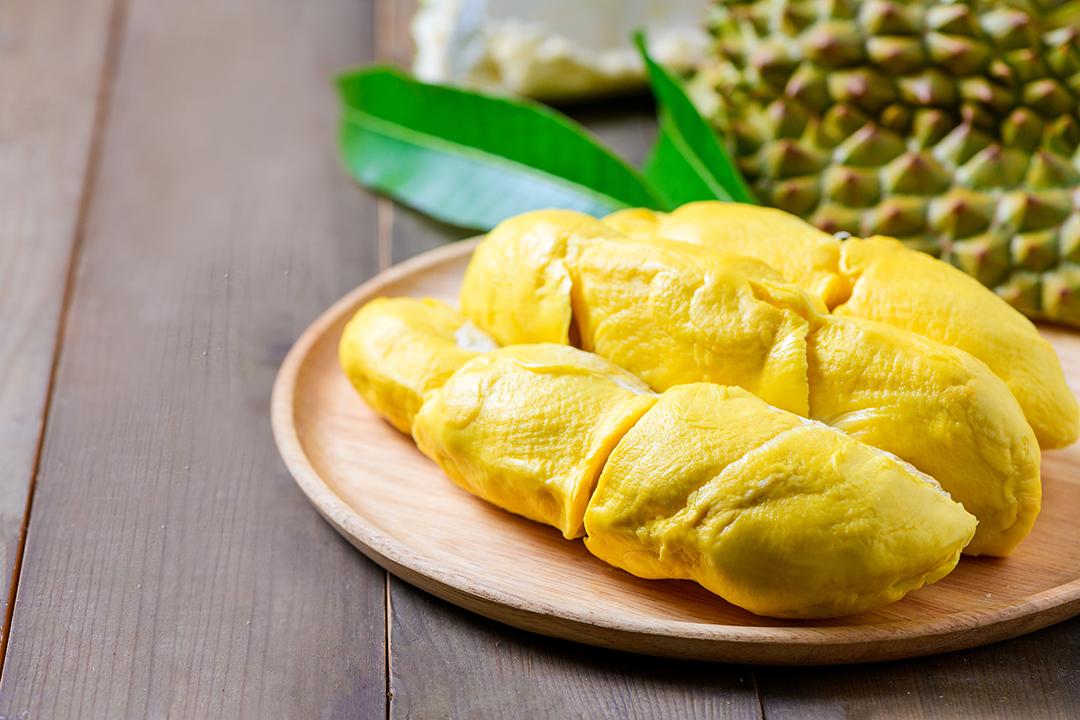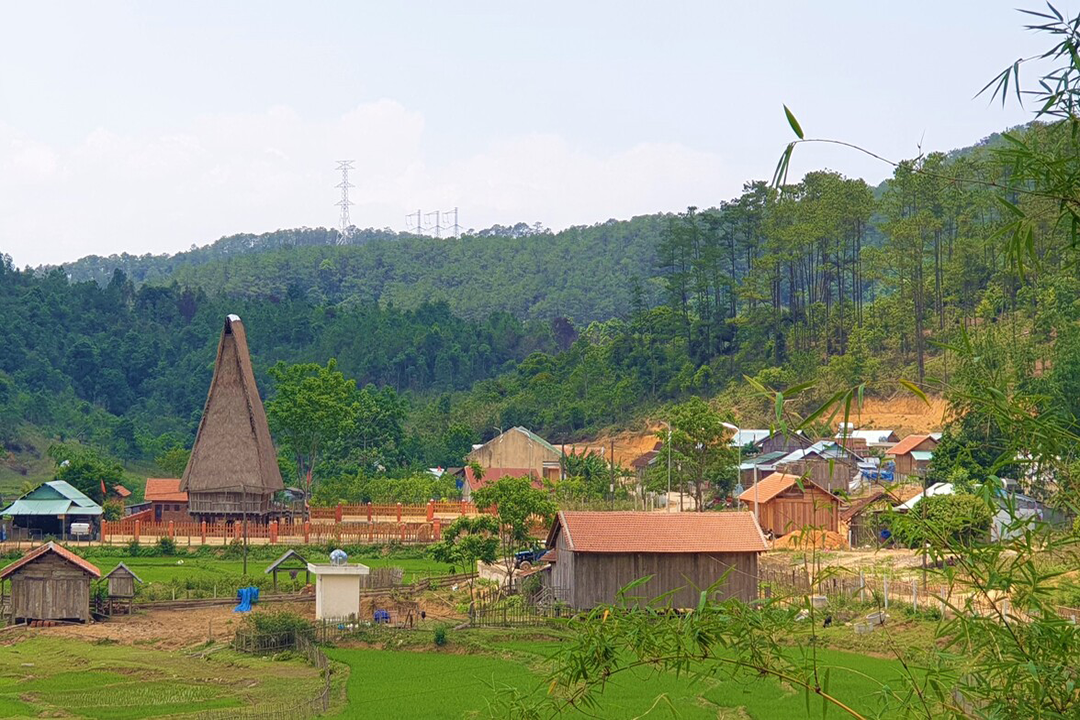Kon Pring Community Tourism Village: Overview, Architecture, Things To Do & Travel Guide
Kon Pring Community Tourism Village welcomes travelers to the heart of Vietnam’s Central Highlands, where cultural heritage and natural beauty come together in perfect harmony. Nestled on the picturesque Mang Den plateau, this charming village is home to the M'Nam ethnic group, offering tourists an authentic glimpse into traditional highland life. With its rustic stilt houses, lively festivals, and the soothing backdrop of pine-covered valleys, Kon Pring invites travelers to experience a way of life deeply rooted in the rhythms of nature and community.
In this guide of GTrip, we’ll take you through everything Kon Pring has to offer. You will learn more about joining the soulful gong dances and tasting local delicacies, and finding cozy homestays that open doors to genuine cultural exchange. Kon Pring promises an unforgettable journey if you seek meaningful interactions or a peaceful retreat surrounded by tradition and nature. Get ready to explore this vibrant village with respect and curiosity.
Overview of Kon Pring Community Tourism Village
Kon Pring Community Tourism Village is a picturesque and culturally rich destination situated on the Mang Den plateau in Dak Long Commune, Kon Plong District, Kon Tum Province. Located just 3 kilometers east of the district center along Highway 24, this village is surrounded by a lush valley filled with towering green pines and enjoys a cool climate year-round, with temperatures rarely exceeding 25°C. Often referred to as the "second Da Lat" of the Central Highlands, Kon Pring offers tourists a tranquil retreat amid pristine nature and vibrant cultural heritage.
The village is predominantly inhabited by the M'Nam people, a subgroup of the Sedang, who make up 95% of its population. Their traditions are deeply embedded in the village’s architecture, rituals, and daily life. You can admire traditional stilt houses constructed from wood and bamboo, as well as iconic Rong communal houses with roofs resembling axe blades. These structures serve as focal points for social gatherings, ceremonies, and cultural preservation.
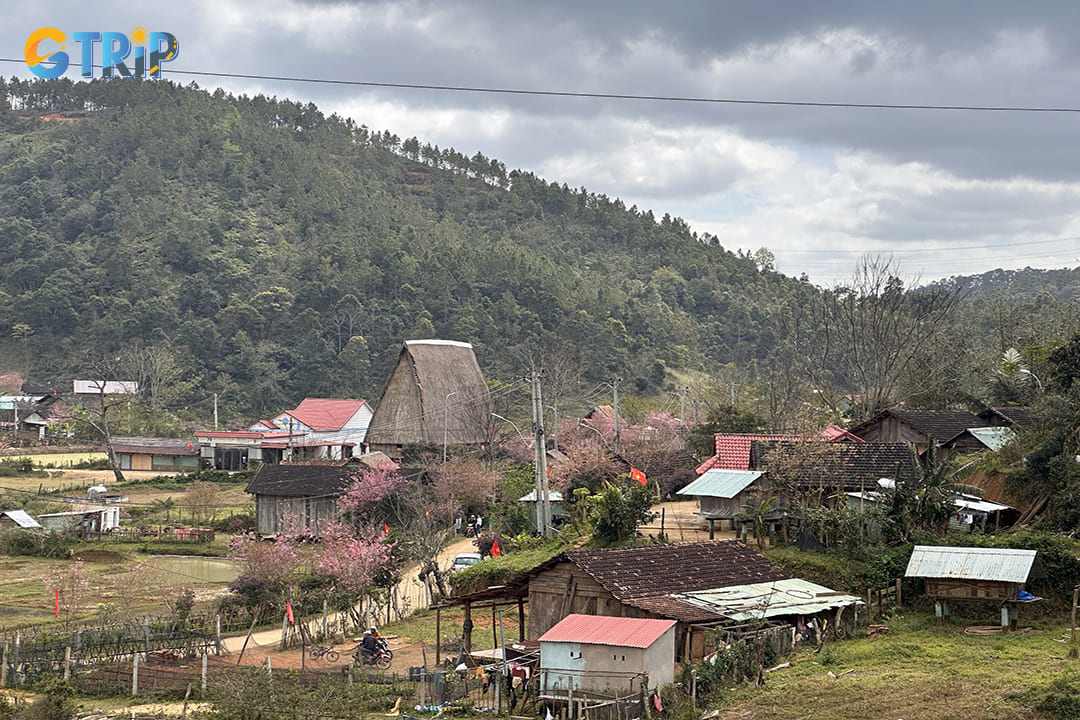
Kon Pring Community Tourism Village is a picturesque and culturally rich destination situated on the Mang Den plateau
Kon Pring’s natural landscape enhances its appeal as an eco-tourism destination. Dense pine forests, small streams, and terraced rice fields create a poetic and serene setting. The village’s agricultural activities, including tea cultivation and fruit farming, contribute to its economy while complementing its sustainable tourism model. Tourists can engage in immersive activities such as nature walks, cooking classes featuring traditional recipes, or handicraft workshops led by local artisans. These experiences foster meaningful connections between tourists and hosts while promoting cultural exchange.
Community-based tourism has transformed Kon Pring into a model for sustainable development. Residents who once relied solely on farming now earn higher incomes through tourism-related activities such as hosting tourists and offering cultural experiences. This shift has revitalized community pride and encouraged younger generations to embrace their heritage. As part of Kon Tum Province’s initiative to develop ten community-based tourism villages by 2030, Kon Pring serves as both a standalone destination and a gateway to exploring the diverse cultures of the Central Highlands.
Traditional architecture in Kon Pring Village
The village of Kon Pring is renowned for its traditional architecture, which reflects the cultural heritage of the M'Nam people and plays a crucial role in the community's social and cultural life. This architecture is characterized by distinct elements that symbolize the rich traditions and community spirit of the village.
Rong houses and communal architecture
At the heart of Kon Pring's architectural landscape are the Rong houses. These elevated stilt houses serve as communal hubs, where important village decisions are made, cultural gatherings are held, and significant rituals take place. The high-pitched, thatched roofs of these houses are more than just an aesthetic choice, they are designed to stand out, symbolizing the strength and unity of the village. The wooden structures, raised on stilts, not only provide protection from the elements but also offer a place for cultural preservation and community bonding.
The design of Rong houses places significant emphasis on communal architecture, demonstrating how the M'Nam people prioritize shared spaces over individual residences. This architectural style reflects their communal way of life, where the needs and stability of the community trump those of individual households.
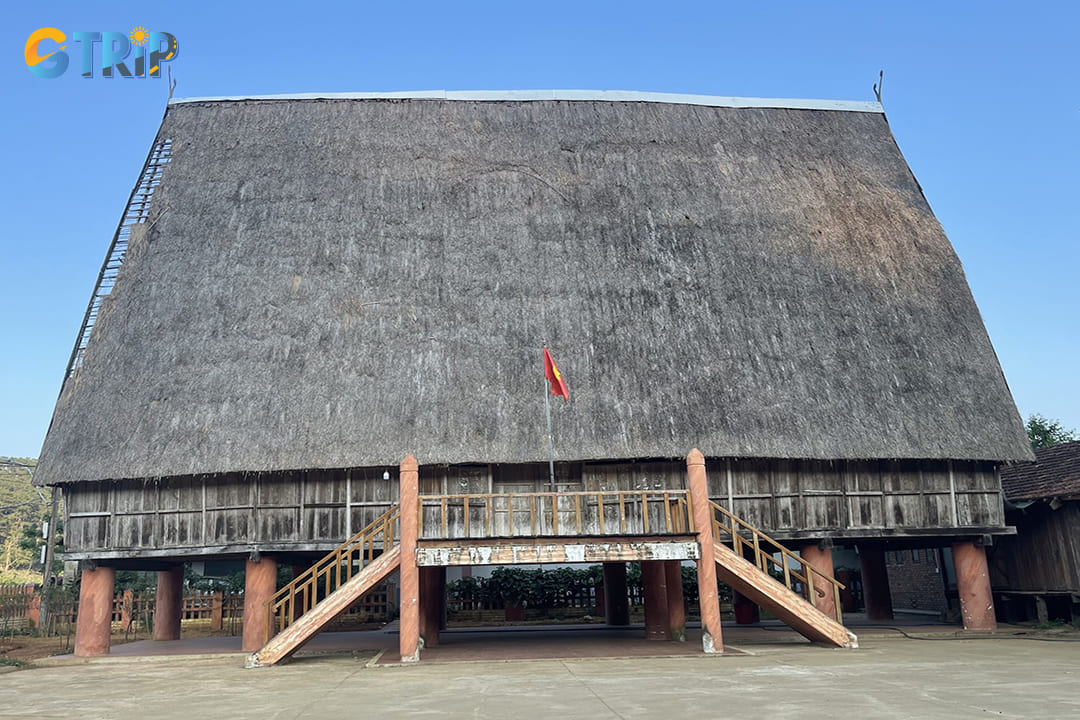
At the heart of Kon Pring's architectural landscape are the Rong houses
Symbolism in architectural design
The architectural designs in Kon Pring are rich with symbolism, reflecting various aspects of the M'Nam culture. For instance, the roofs of the Rong houses resemble an axe blade, a nod to their agricultural roots and a symbol of strength and resilience. The design embodies not just functionality but also cultural meanings and aesthetics.
The use of natural materials such as wood and bamboo shows a deep connection with the environment. It also represents sustainability, a concept that the M'Nam people have adhered to for generations. Such materials are symbolic of the M'Nam's harmony with nature, their reliance on local resources, and their commitment to preserving the environment, which aligns perfectly with contemporary sustainable practices.
Preservation of traditional building techniques
Preservation of traditional building techniques in Kon Pring is imperative in maintaining its cultural heritage. These techniques are passed down through generations, with each new generation learning the art of constructing and maintaining these architectural marvels. The methods employed in building these houses are sustainable and environmentally friendly, incorporating locally sourced materials that have withstood the test of time.
Efforts to preserve these techniques are also supported by community-based tourism initiatives, which aim to educate tourists about the significance of these structures. Kon Pring shares its architectural heritage by involving tourists in workshops and hands-on experiences. These activities also foster a deeper appreciation for the cultural significance behind traditional building methods.
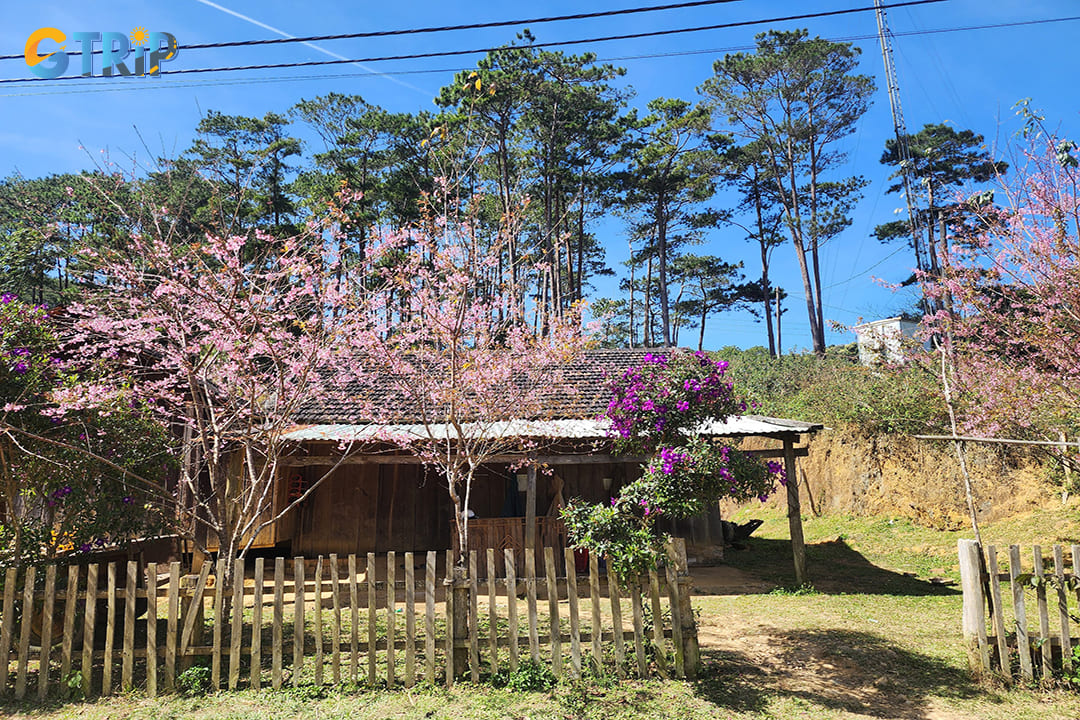
Preservation of traditional building techniques in Kon Pring is imperative in maintaining its cultural heritage
Things to do when traveling at Kon Pring Community Tourism Village
Here are some activities that you can do when visiting this beautiful village.
1. Participate in traditional gong performances
One of the most iconic cultural experiences in Kon Pring is attending the traditional gong performances, which are deeply rooted in the spiritual life of the M'Nam people. These gong ensembles produce rich, resonant sounds that symbolize the connection between humans and nature, serving both as entertainment and as sacred rituals during festivals and ceremonies. You can enjoy vibrant gong dances, often accompanied by communal singing and dancing around campfires, creating an immersive cultural atmosphere that highlights the village’s heritage.
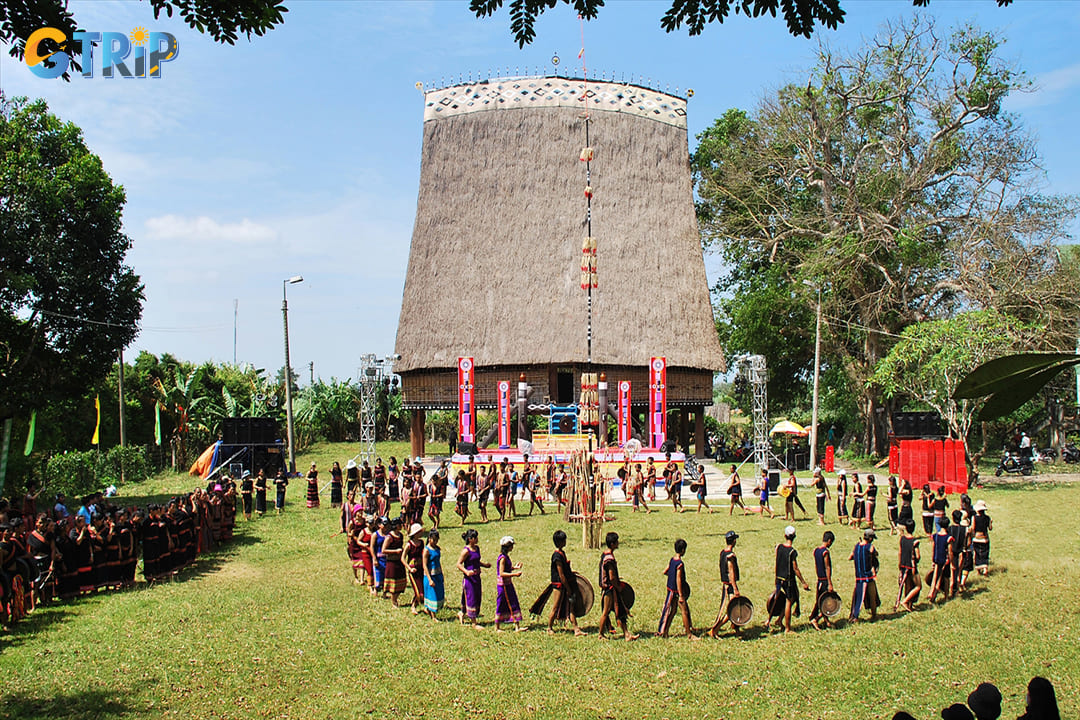
One of the most iconic cultural experiences in Kon Pring is attending the traditional gong performances
2. Join local festivals and rituals
Kon Pring hosts various festivals throughout the year that showcase the rich traditions of the M'Nam community. Notable events include the sowing ceremony, the new rice festival, the communal house festival, and the water trough festival. These celebrations are vibrant occasions filled with music, dance, ritual offerings, and communal feasts. Tourists can observe or participate in these festivals, gaining insight into the agricultural calendar and spiritual beliefs that shape village life. These festivals also serve as important moments for cultural exchange and community bonding.
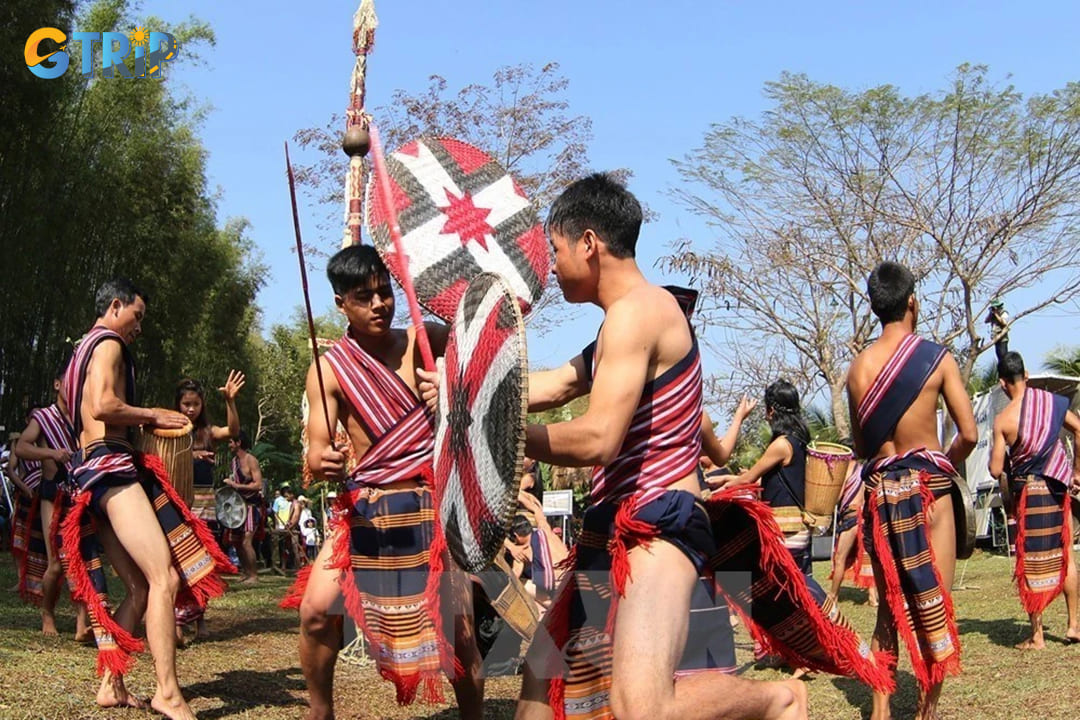
Kon Pring hosts various festivals throughout the year that showcase the rich traditions of the M'Nam community
3. Take traditional cooking classes
Tourists to Kon Pring have the unique opportunity to learn how to prepare traditional M'Nam dishes in cooking classes led by local experts. These classes often feature specialties such as grilled chicken and bamboo-tube rice, made from fresh, locally sourced ingredients. Besides, one standout dish is canh chua mang rung, a sour bamboo shoot soup that's both refreshing and savory, showcasing the rich bounty of the Mang Den plateau's forests. The dish is often prepared during communal gatherings, symbolizing the harmony between people and nature. Cooking alongside villagers allows tourists to taste authentic flavors and offers a window into the culinary customs and communal dining practices central to the M'Nam culture.
4. Experience handicraft workshops
Kon Pring is known for its traditional handicrafts, including brocade weaving, bamboo crafting, and wine making. Tourists can participate in workshops where local artisans demonstrate these skills and guide tourists in creating their handicrafts. These hands-on experiences help preserve cultural knowledge and provide economic support to the community. Tourists often leave with unique souvenirs and a deeper appreciation of the craftsmanship involved.
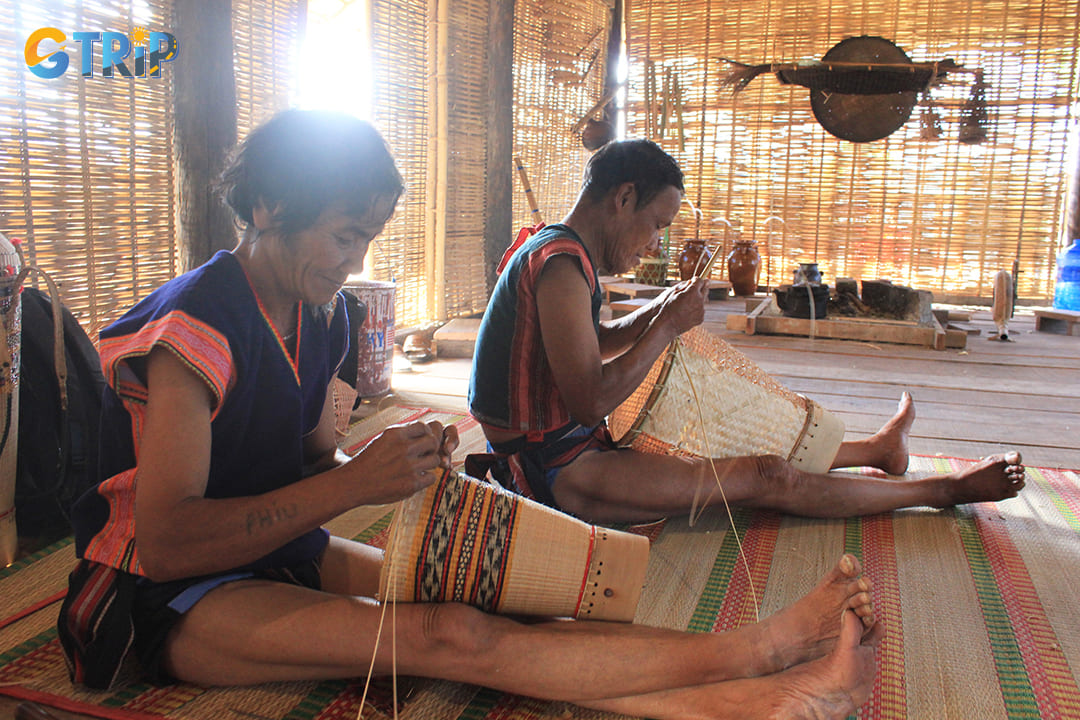
Kon Pring is known for its traditional handicrafts, including brocade weaving, bamboo crafting, and wine making
5. Explore the nature trails of Mang Den
The village’s location on the Mang Den plateau offers you the chance to explore stunning natural landscapes characterized by pine forests, small streams, terraced fields, and rivers. Nature walks and scenic hikes allow tourists to enjoy the cool climate and tranquil environment while observing local flora and fauna. These outdoor activities complement the cultural experiences and emphasize Kon Pring’s commitment to sustainable tourism.
Opening hours and entrance at Kon Pring Community Tourism Village
Kon Pring Community Tourism Village welcomes tourists all day, offering a unique cultural experience in the Central Highlands. Unlike some attractions with specific operating hours, Kon Pring is a living village where daily life unfolds naturally, allowing tourists to immerse themselves in the local culture at any time.
There is no entrance fee to visit Kon Pring Community Tourism Village. However, you may need to pay for specific activities or services within the village, such as participating in cooking classes, attending cultural performances, or hiring local guides. Supporting these activities directly benefits the community and contributes to the sustainability of tourism in the area.
While the village itself is open at all hours, note that some specific attractions or events may have their own schedules. For example, cultural performances or workshops might be more readily available during daylight hours or planned festival times. It's also worth checking the schedule for the night street in Mang Den, which operates in the evening and offers additional dining and shopping options.
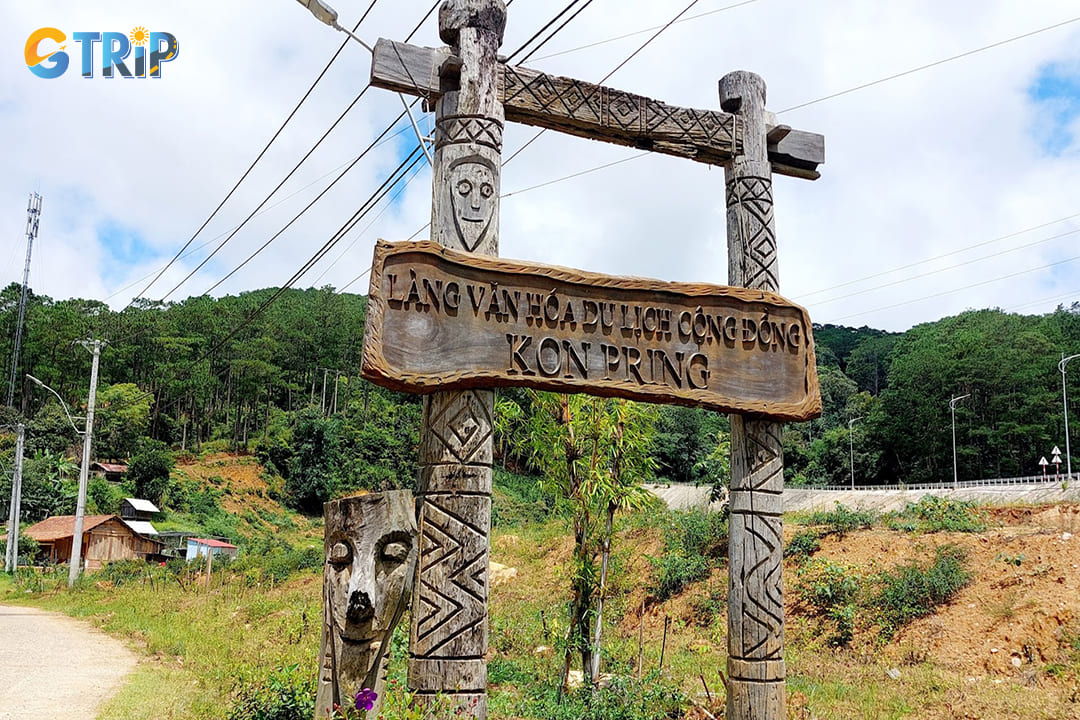
Kon Pring Community Tourism Village welcomes tourists all day, offering a unique cultural experience in the Central Highlands
Best times to visit Kon Pring Community Tourism Village
Kon Pring enjoys a temperate climate year-round, making it an attractive destination at any time. However, the best time to visit is during the dry season, from December to April, when the weather is mild, sunny, and ideal for outdoor activities and cultural exploration. During these months, temperatures generally stay below 25°C, and rainfall is minimal, allowing you to fully enjoy the village’s natural beauty and participate in traditional festivals. Clear skies also provide stunning views of the surrounding pine forests and highlands.
The rainy season, from May to November, brings heavier rains and lush greenery, transforming the landscape into a vibrant, verdant paradise. While the scenery is especially beautiful, travelers should be prepared for occasional heavy showers and potentially slippery rural roads. Visiting during this time means fewer tourists and a more tranquil experience, but it requires flexible travel plans and attention to weather conditions. Additionally, planning your trip around local festivals offers a unique chance to witness authentic M'Nam cultural expressions and communal celebrations.
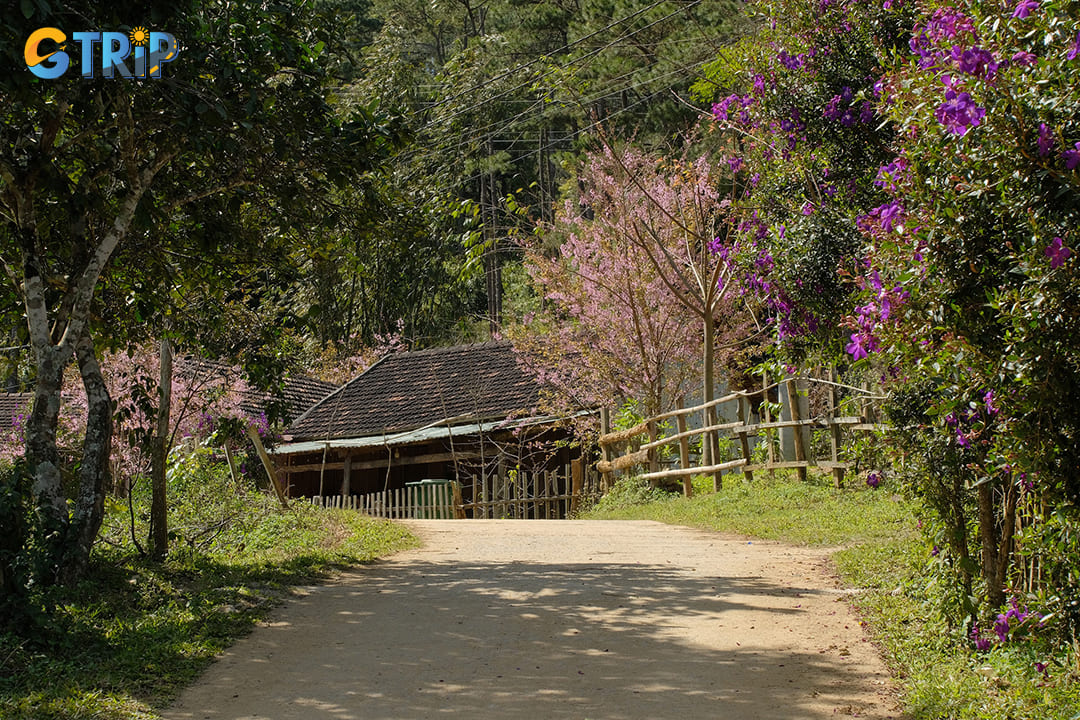
The best time to visit is during the dry season, from December to April, when the weather is mild, sunny
How to get to Kon Pring Community Tourism Village?
You can reach this village by many transportation methods as below.
By airplane
The nearest major airport to Kon Pring Community Tourism Village is Pleiku Airport, located about 120 kilometers away. Pleiku Airport serves flights from major Vietnamese cities such as Hanoi, Ho Chi Minh City, and Da Nang. Upon arrival, travelers can rent a car or hire a taxi for the scenic 3-hour drive to Kon Pring. Taxi fares typically range from 1.5 million to 2 million VND (approximately $65 - $85). Renting a car offers flexibility for stops along the way and exploring the Central Highlands.
By bus
For budget-conscious travelers, buses run regularly from Ho Chi Minh City, Pleiku, and Kon Tum to Mang Den Town, which is about 10 kilometers from Kon Pring. Bus tickets from Ho Chi Minh City to Mang Den cost around 250,000 - 350,000 VND ($11 - $15). From Mang Den, you can take local motorbike taxis or arrange transfers with local tour operators to cover the remaining distance to Kon Pring, usually costing 50,000 - 100,000 VND ($2–$4). This option is economical but requires some coordination for the last leg of the journey.
By car or motorcycle rental
Renting a car or motorcycle is a popular choice for those seeking independence and adventure. The drive from Kon Tum city to Kon Pring covers approximately 60 kilometers via Highway 24, taking about 1.5 hours. Car rentals typically start at 700,000 VND/day ($30), while motorcycle rentals range from 150,000 to 250,000 VND/day ($6 - $11). Roads are generally well-maintained, but travelers should be cautious during the rainy season when conditions can be slippery.

Renting a car or motorcycle is a popular choice for those seeking independence and adventure
To make the most of your journey, consider joining a Mang Den Retreat tour, which includes a visit to Kon Pring Village and also offers guided experiences through the lush landscapes, waterfalls, and cultural highlights of Kon Tum. It is perfect for travelers looking to explore deeper with ease and local insight.
Accommodation options at Kon Pring Community Tourism Village
Tourists to Kon Pring Village can enjoy a variety of authentic and comfortable accommodation options that immerse them in the local culture and natural beauty. Let's explore some places below.
ToChimRi Homestay MangDen
ToChimRi Homestay is a popular choice for travelers seeking an authentic cultural experience in the heart of the Mang Den plateau near Kon Pring. Located within close proximity to the village, this homestay offers traditional wooden and bamboo stilt houses that reflect the architectural style of the M'Nam people. Guests can enjoy the cool climate and serene pine forest surroundings while experiencing warm local hospitality. Prices typically range from 400,000 to 600,000 VND per night (approximately $17 - $26), making it an affordable yet comfortable option. The homestay provides basic amenities, communal spaces for cultural activities, and easy access to nearby nature trails and village attractions.
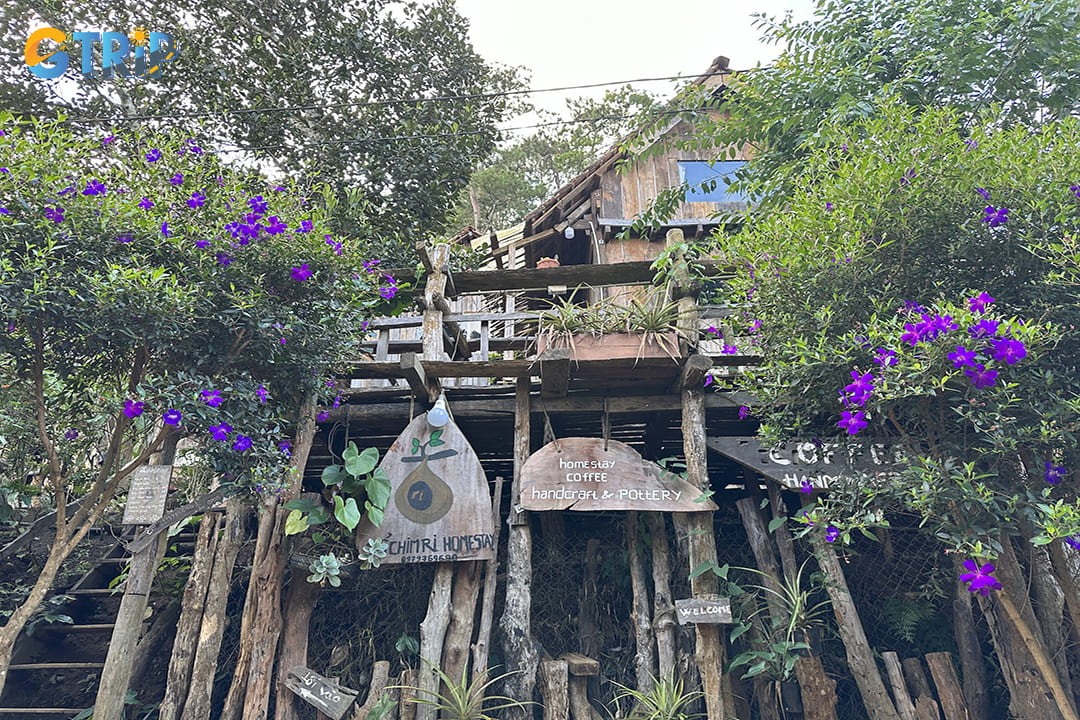
ToChimRi Homestay is a popular choice for travelers seeking an authentic cultural experience in the heart of the Mang Den plateau
1996 Homestay Mang Den
1996 Homestay Mang Den is known for its cozy atmosphere and convenient location near Kon Pring Community Tourism Village. The homestay features traditional-style rooms with wooden interiors, blending rustic charm with modern comfort. Guests can enjoy home-cooked meals showcasing local flavors, and the hosts often organize cultural experiences such as cooking classes and handicraft workshops. Nightly rates range from 300,000 to 700,000 VND (around $13 - $30), depending on room type and season. This accommodation is ideal for tourists looking to immerse themselves in M'Nam culture while enjoying a peaceful rural setting.
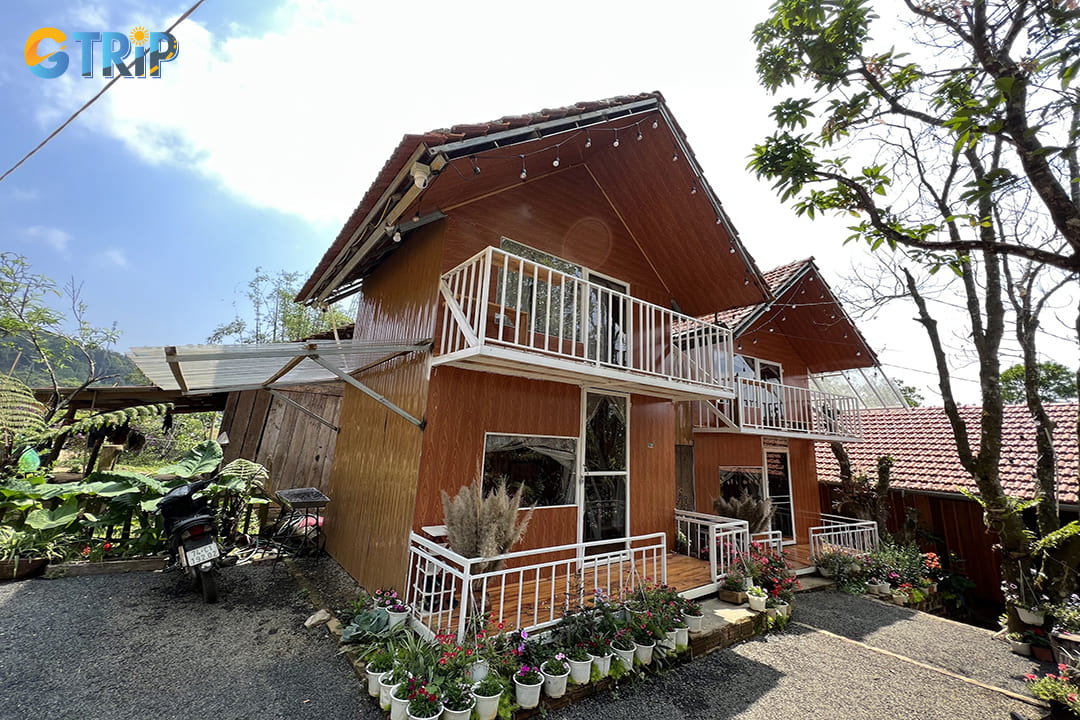
1996 Homestay Mang Den is known for its cozy atmosphere and convenient location near Kon Pring Community Tourism Village
Nha Trong Ban - Homestay
Nha Trong Ban Homestay offers an authentic village living experience directly within Kon Pring itself. Staying here allows you to live alongside local families in traditional stilt houses, gaining firsthand insight into daily life and customs. The homestay emphasizes community-based tourism principles, supporting local livelihoods and cultural preservation. While facilities are simple, the experience is rich in cultural value. Prices are generally in the range of 800,000 to 1,800,000 VND per night (approximately $31 - $70), making it an accessible option for budget travelers and those seeking genuine cultural immersion. Guests can participate in village activities, festivals, and workshops organized by the community.
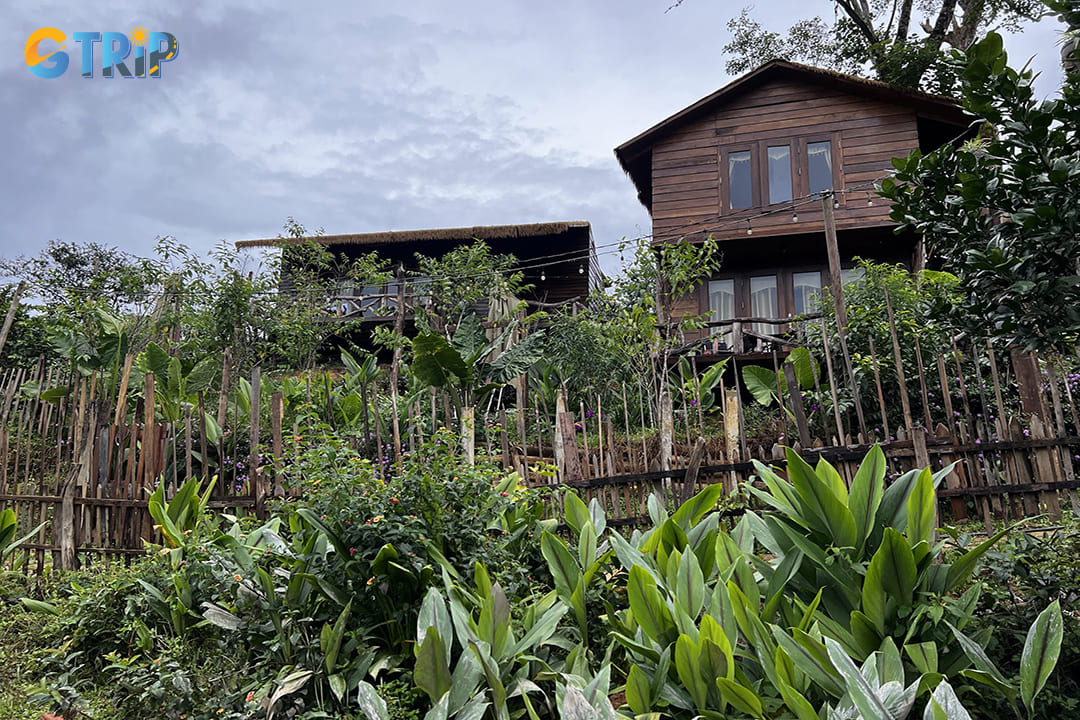
Nha Trong Ban Homestay offers an authentic village living experience directly within Kon Pring
Nearby attractions from Kon Pring Community Tourism Village
Kon Pring is an ideal destination for those seeking natural beauty combined with cultural immersion.
Kon Pring Hammock Bridge
The Kon Pring hammock bridge is a charming pedestrian bridge located within the Kon Pring Community Tourism Village. This bridge offers tourists a scenic crossing over a small stream or valley, surrounded by the village’s lush pine forests and mountainous terrain. It is designed to blend naturally with the environment, often constructed from wood and bamboo materials typical of the local ethnic M'Nam people’s craftsmanship. The bridge provides a peaceful vantage point to appreciate the tranquil landscape and traditional stilt houses of the village, making it a popular spot for photography and quiet reflection. Crossing the hammock bridge allows tourists to immerse themselves in the serene rural atmosphere and connect with the natural beauty that defines Kon Pring. When experiencing the hammock bridge, you should also be careful to cross as the bridge is quite swaying.
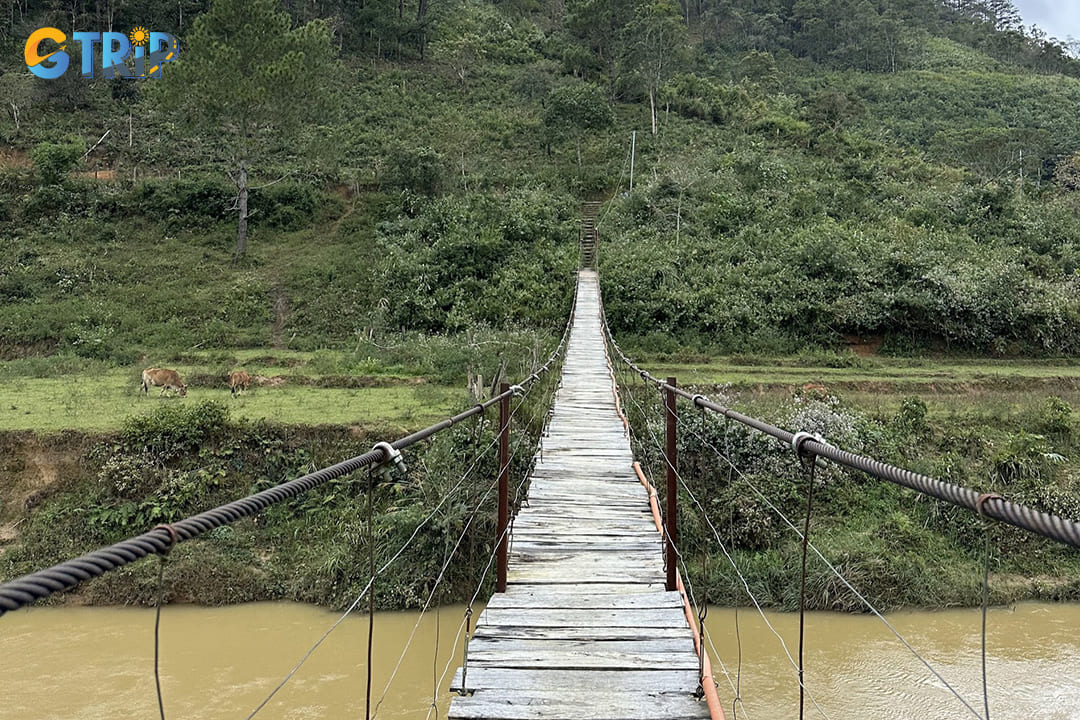
The bridge offers tourists a scenic crossing over a small stream or valley, surrounded by the village’s lush pine forests and mountainous terrain
Statue of Our Lady of Mang Den
The Statue of Our Lady of Mang Den is a significant religious and cultural landmark near Kon Pring Village, located on the Mang Den plateau. This statue honors the Virgin Mary and serves as a spiritual site for both local residents and tourists. It reflects the presence of Catholicism in the Central Highlands, a region where indigenous cultures and religious traditions coexist. The statue is often visited by pilgrims and tourists who come to admire its serene setting amid the pine forests and cool climate of Mang Den. The site offers a peaceful environment for contemplation and prayer, as well as panoramic views of the surrounding highlands. It has become an important symbol of faith and cultural diversity in the area, attracting those interested in religious heritage alongside natural beauty.
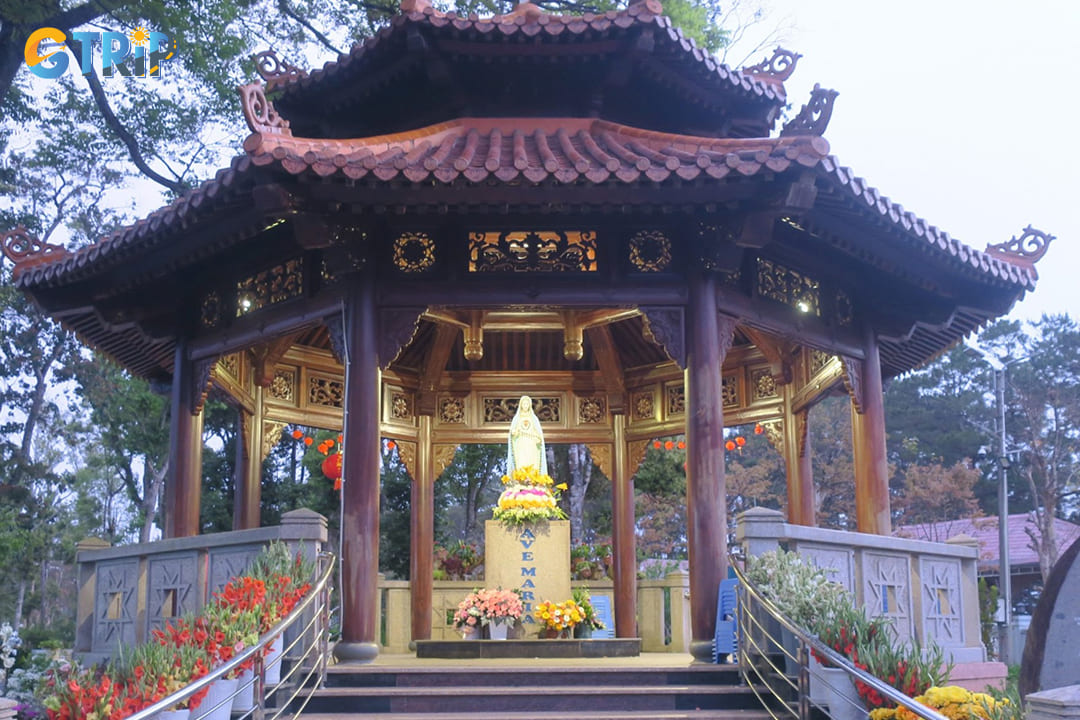
The Statue of Our Lady of Mang Den is a significant religious and cultural landmark near Kon Pring Village
Travel tips when visiting the Kon Pring Community Tourism Village
- Travel light: Pack only essential items, comfortable footwear, and weather-appropriate clothing since the village features traditional architecture and maybe limited modern amenities.
- Hire a local guide: Engage with local tour operators who offer cultural insights and can help navigate community customs smoothly.
- Respect local etiquette: Learn a few basic phrases and dress modestly to honor the traditions of the M'Nam people.
- Prepare for limited connectivity: Expect spotty internet service in rural areas, so download offline maps and inform someone of your itinerary.
- Embrace community activities: Participate in local events like gong performances and handicraft workshops to immerse yourself in the village’s heritage.
- Support sustainable practices: Purchase local crafts and avoid littering to help preserve both the natural environment and cultural integrity.
- Ask locals for recommendations: Locals can point you to good places like the best eateries or scenic spots, enhancing your overall experience.
- Bring cash: With limited ATM access and card facilities, carrying local currency ensures you can easily pay for services and souvenirs.
- Stay hydrated and protected from the sun: Keep water, sunblock, and a hat handy during hikes or outdoor activities to stay comfortable and safe.
FAQs about the village
Here are some questions and answers about Kon Pring Community Tourism Village.
1. Who are the M'Nam people, and what are their cultural practices?
The M'Nam people are an integral branch of the Sedang ethnic group, recognized for their strong community bonds and vibrant cultural traditions. Communal living and celebrations, such as the sowing ceremony and the new rice festival, play a significant role in their society. These events are pivotal for preserving their cultural narratives and offer tourists enriching perspectives.
2. What languages are spoken in Kon Pring Village?
The primary language spoken by the M'Nam people is their indigenous language, a branch of the Sedang language family. Vietnamese is widely understood, especially among younger generations and those involved in tourism, so communication with tourists is generally smooth. The local people can’t speak English. Therefore, if you want to communicate with them, you should use the support from tourists or translation apps.
3. Are there guided tours available in Kon Pring Community Tourism Village?
Yes. Local guides and tour operators offer cultural tours, nature walks, and festival experiences to help tourists understand the M'Nam culture and natural environment better.
4. Is the village accessible for travelers with limited mobility?
Due to its mountainous terrain and rural setting, accessibility may be challenging for travelers with limited mobility. Tourists should prepare accordingly and consult local guides for assistance.
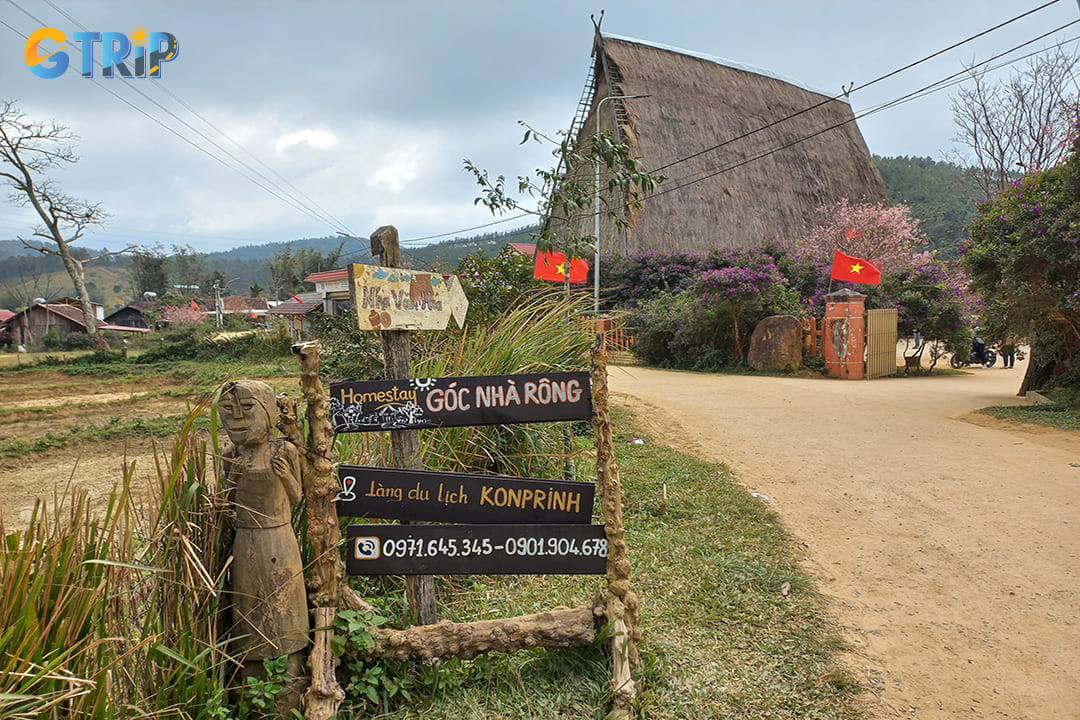
The M'Nam people are an integral branch of the Sedang ethnic group, recognized for their strong community bonds and vibrant cultural traditions
Kon Pring Community Tourism Village stands as a testament to the power of sustainable, community-based tourism. It offers a harmonious blend of breathtaking natural beauty, rich M'Nam cultural traditions, and immersive experiences. You can experience the iconic Rong houses and vibrant gong performances, savor local cuisine and explore the stunning Mang Den plateau. A visit to Kon Pring provides lasting memories and also contributes to the preservation of this unique community and its environment, setting a benchmark for responsible tourism in the region. If you are interested in exploring the village with the best support, consider booking the Mang Den retreat tour of GTrip - Vietnam Travel Agency.

